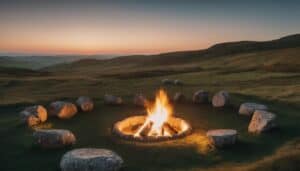Best Things To Do In New Delhi!
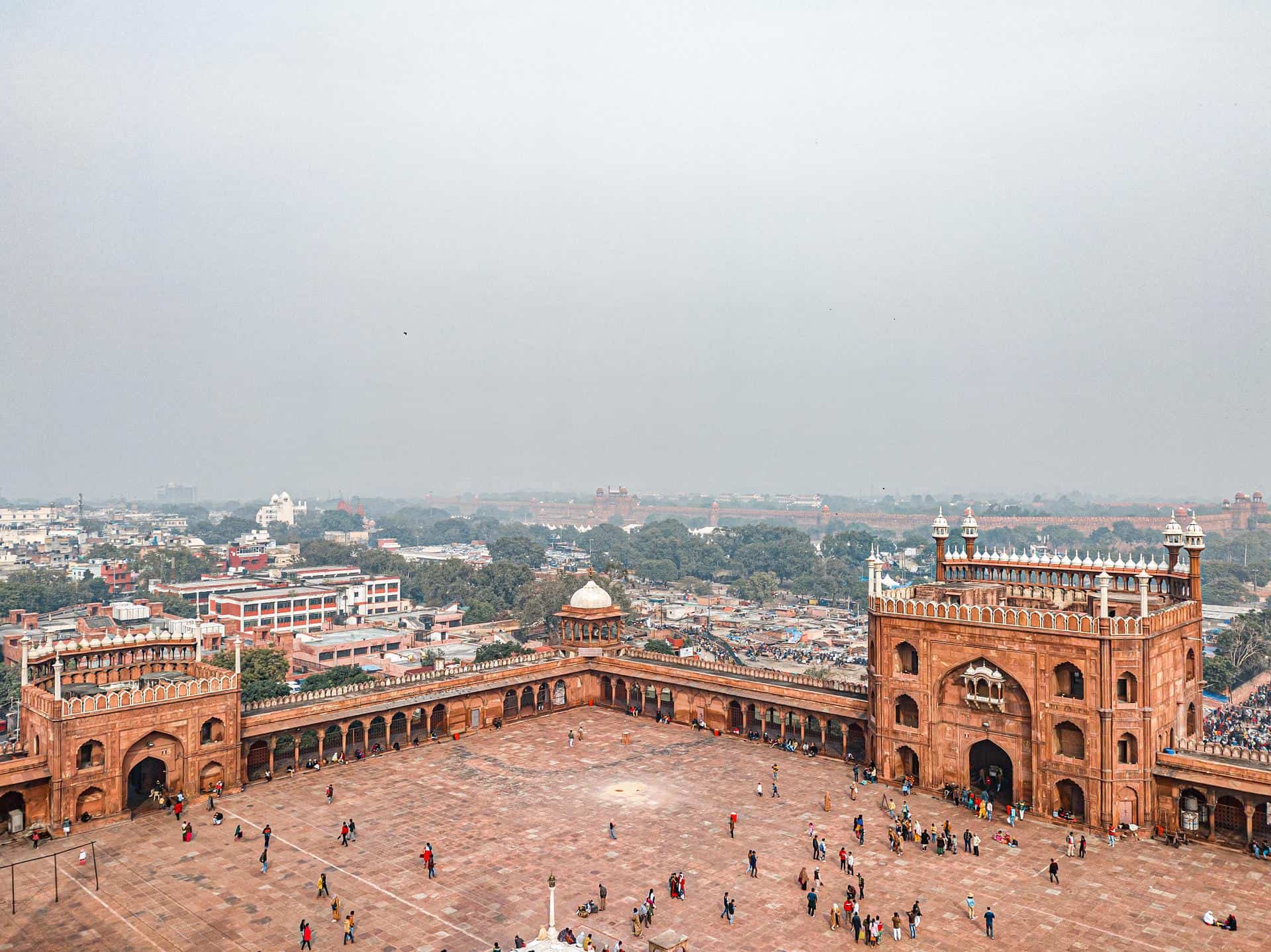
Updated On: November 08, 2023 by Esraa Mahmoud
It is almost impossible to be planning a trip to India without making a pass to its capital, New Delhi. New Delhi has a rich history behind it and a lot to offer for travelers. In 1911, New Delhi replaced Calcutta as the capital of India. New Delhi is part of Delhi, the third-largest city in the world, with more than 25 million inhabitants.
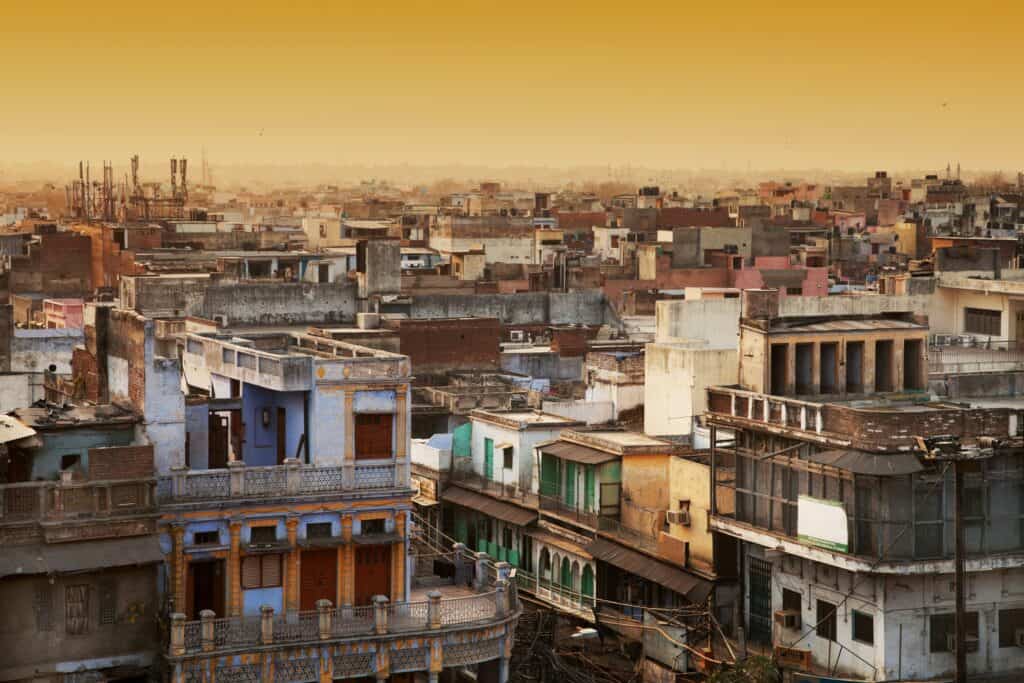
New Delhi was built over 100 years ago during British colonial rule to replace the old capital city. It is not difficult to see the European influence in the architecture of the government buildings. The Indian metropolis is so incredibly diverse, and it offers a variety of sights from temples to museums and parks.
There is something for everyone in New Delhi. Helping you come up with the perfect itinerary for your visit, here are our picks of the best things to do and places to visit in the capital of India, New Delhi.
Red Fort (Lal Qila)
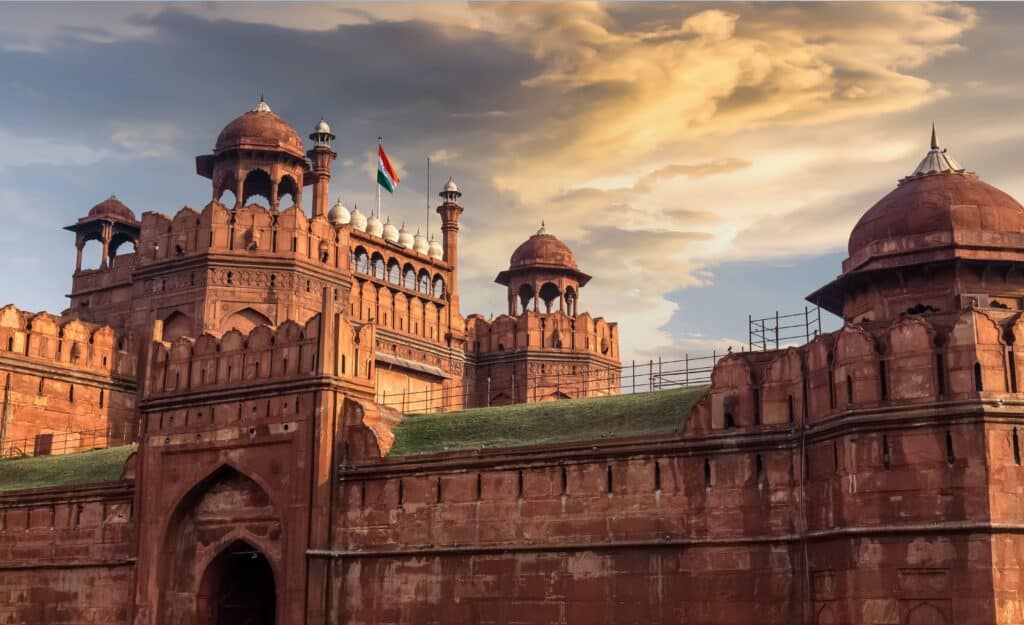
One of the most attractive sights of Delhi is the massive red sandstone fort and palace complex, which date back to the era of the Mughal Empire. After crossing the Lahore Gate and leaving behind the busy streets of Old Delhi, you will find yourself in an oasis of tranquility.
The Red Fort stretches for almost a kilometer along the eastern edge of Delhi’s old city. The fort and palace complex has been a World Heritage Site since 2007. The gigantic structure was built in the 17th century by order of the Mughal emperor Shah Jahan. In the following four centuries, Lal Qila was expanded, looted, and in parts destroyed.
In the fort, you will explore a three-story drum house housing the Indian War Museum, the public reception hall Diwan-e-Am behind it, the marble palace Mumtaz Mahal, the private palace Khas Mahal, the palace of colors Rang Mahal, royal baths, the Pearl Mosque and some pavilions.
The construction of the Red Fort started in 1638 and lasted for ten years. After that, it was further expanded. Unfortunately, the jewel of the palace complex was stolen by the Persian army in 1737 – the Peacock Throne, beautifully decorated with precious stones, pearls, and gold. To this day, no one knows where it has gone. But it did not stop there: the Afghan and British troops also stole valuables, on the one hand, and partially destroyed the fort, on the other. Therefore, it had to be renovated later.
Now the Red Fort is one of the most visited attractions in India. But that’s not surprising; the sight alone is breathtaking. Make sure to have enough time to explore.
Qutb Minar Complex
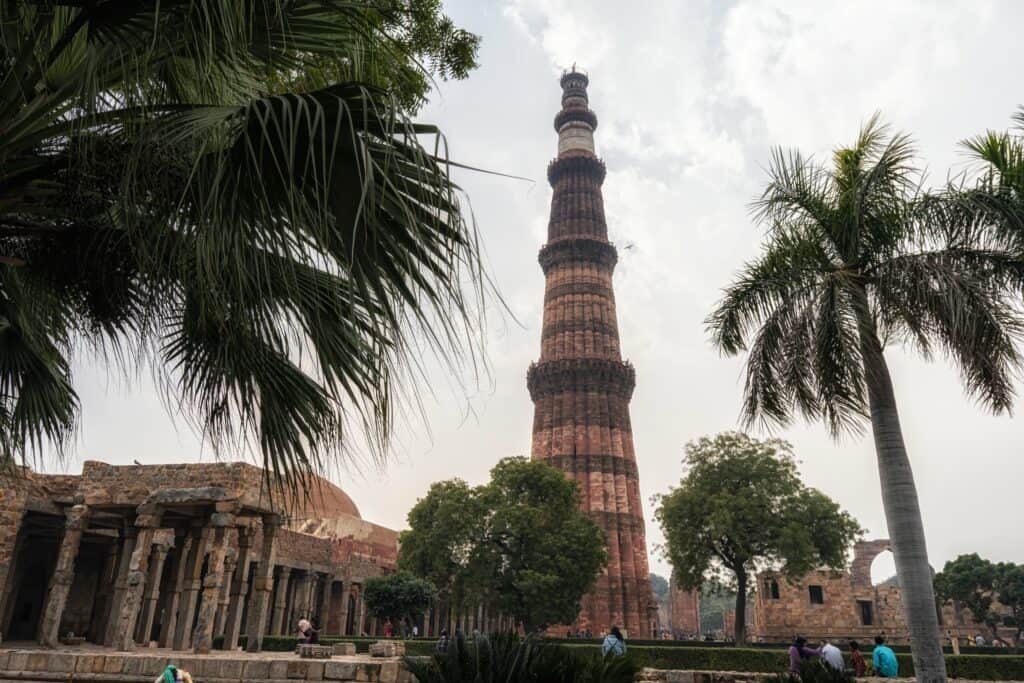
In New Delhi, one UNESCO World Heritage Site follows another, such as the Qutb Minar. Qutub Minar is the tallest tower in India at 72.5 meters. The minaret was built in the early 13th century using red sandstone and marble. Some believe Qutub Minar was built to celebrate Muslim rule in the country. Others claim it was built to call the faithful to prayer.
The surrounding complex houses the first mosque built in India, tombs, and a madrasa. The complex also includes an iron pillar, which is inexplicably resistant to corrosion, even after being exposed to the natural elements for centuries. Visitors were able to climb the 379 steps to the top of the Qutb Minar until 1981, but now it is closed to the public. Next to the tower stands the unfinished minaret, the Alai Minar.
Qutb Minar Complex is one of the major attractions of the city, and it would be a shame not to visit it.
Jama Masjid Mosque/Friday Mosque
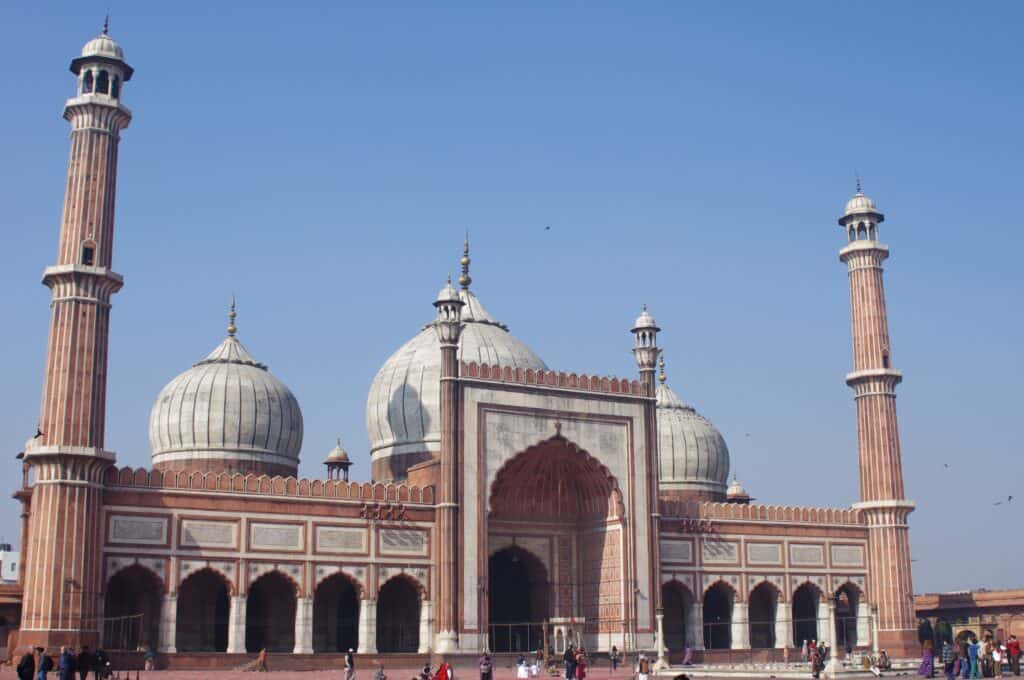
The Jama Mosque is the largest mosque in India and one of the largest mosques in the world. It was inaugurated in 1650 by the Mughal Emperor Shah Jahan, who also built the Taj Mahal and the Red Fort. It took six years to complete the massive red sandstone structure at the cost of one million rupees.
It is one of the best examples of Mughal architecture in India. The mosque is distinguished by its tall minaret towers and domes that can be seen from a far distance. The Jama Mosque reflects the Mughal architectural style with its Islamic, Indian and Persian influences.
Shah Jahan also ensured that the mosque and its pulpit stood higher than his residence and throne. Once you have passed through the entrance gate, you will find yourself in the large courtyard. There is room for over 20,000 worshippers!
Jama Masjid is still an active mosque. The mosque is closed to tourists during prayer times. If you are not dressed appropriately for a visit, you will be given a robe at the entrance. Women should also be covered on sleeves and legs, and you have to take off your shoes.
The stone pavement is covered with carpet runners in some places so that the path does not feel so hot. The atmosphere in the Jama Masjid is pleasant and quiet. Believers are praying, washing in the water, or feeding the lucky pigeons. You immediately forget how restless the street outside the mosque is.
The appearance of the mosque is simply amazing and almost a bit intimidating. The gorgeous onion domes, the 260 columns, the glowing red sandstone, the white marble, the symmetrical architecture… Rounded off by two minarets that rise 40 meters into the sky on both sides. Incredible what the 5000 workers created here in 1650!
Gurudwara Bangla Sahib Temple
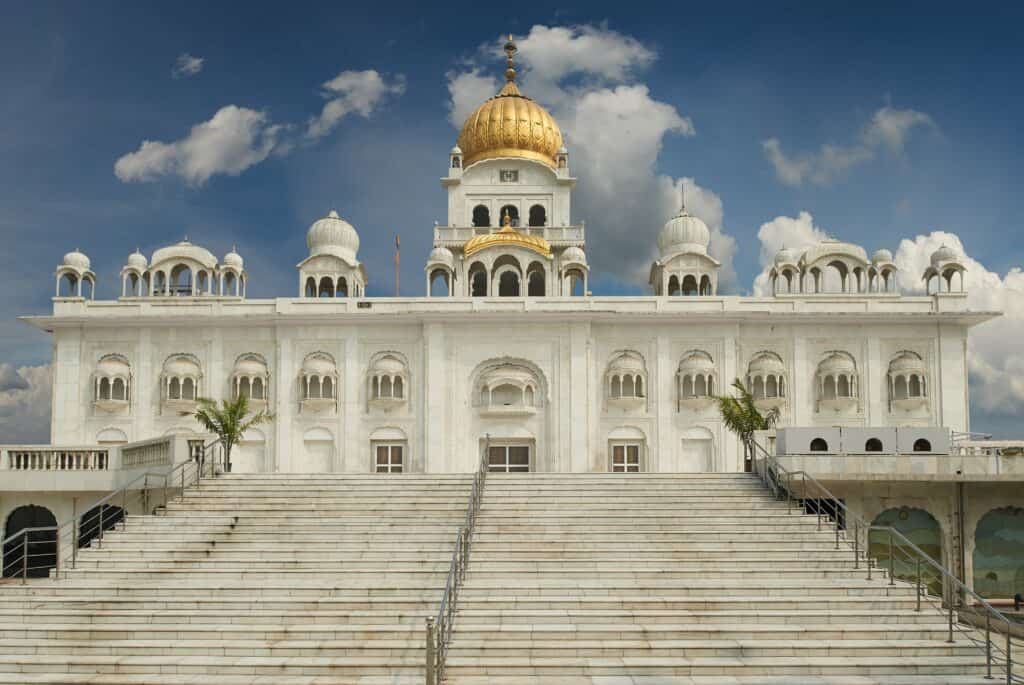
The Sikh Gurudwara Bangla Sahib Temple reflects both the symmetry of Mughal mosques and the hurly-burly of Hindu temples. The temple is built of white marble and topped with a gleaming golden onion dome. To the right of the building, a priest distributes prasad.
It is a sacrificial food that Sikhs share with Hindus and is similar to Christian communion: you get a lump of this sugar, flour, and ghee preparation in both hands. You put the food in your mouth with your right hand and rub the remaining ghee into your hands.
There is an impressively large kitchen in the temple, and you can see it as well. In the hallway, potatoes and onions are peeled by volunteers. In the cooking area, various dishes are prepared in huge pots. Next to the kitchen, there is a large dining hall. Every day, 30,000 people are fed here, regardless of religion, origin, or financial situation. Volunteers go around with dishes in buckets and with ladles, handing out nice portions to everyone.
When a large group has eaten, everyone must leave the room. The floor is quickly cleaned afterward for the next group, which is already waiting in an anteroom. You can also join in the meal. In the dining room, you sit on a carpeted runner and get a shiny plate with troughs. Here the “menu” was one of the most delicious we have eaten in India.
Trust us; this is going to be one of the most beautiful temple visits in your lives…… It is a purifying experience for the mind and soul.
India Gate
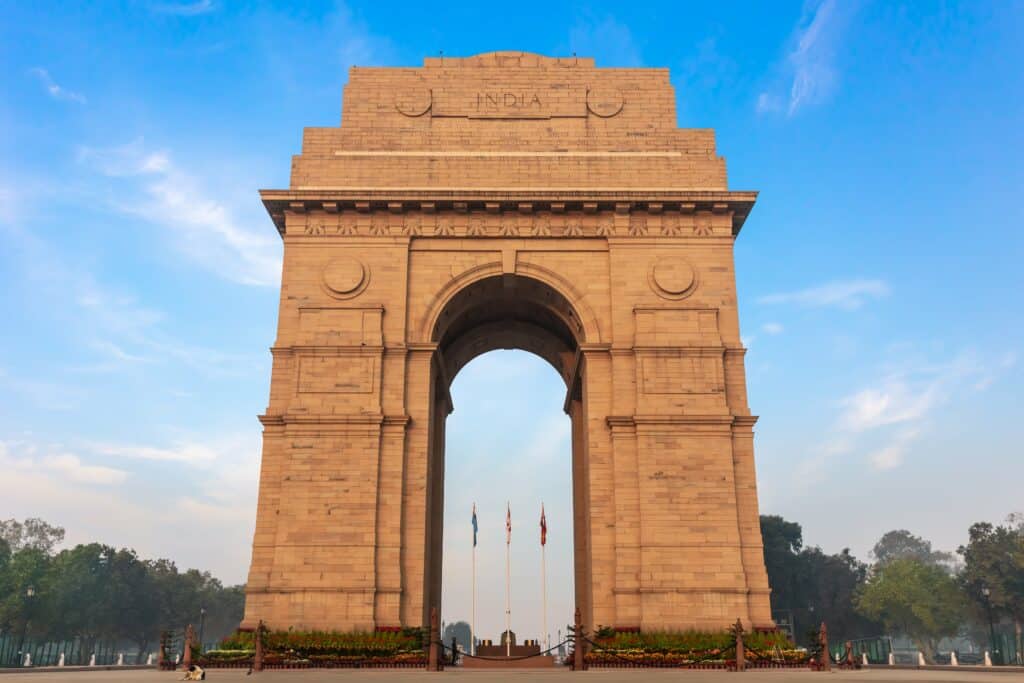
India Gate is one of the most famous monuments and a landmark of the city. It stands in the heart of New Delhi. The foundation stone of the India Gate was laid in 1920. The 42-meter-high monument was dedicated to all Indian soldiers of the British Army who died in the First World War. Another monument in the spacious square is the Amar Jawan Jyoti. It was added later and reminded us of the soldiers who sacrificed their lives in the Indo-Pakistani War in 1971.
India Gate is surrounded by lush green lawns, which are popular picnic spots. The wide streets around India Gate are the perfect spot for walking in the morning and evening. The space around the monument is popular with Indian families because children have plenty of room to run and play. As night falls, India Gate and the surrounding fountain are beautifully illuminated, making for a lovely sight that you don’t want to miss.
Presidential Residence Rashtrapati Bhavan
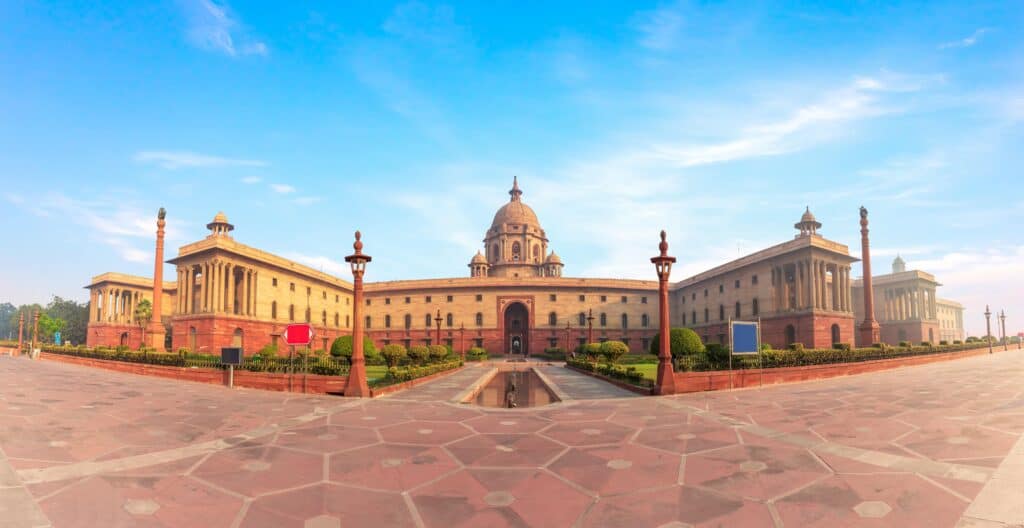
The magnificent Rajpath Road connects India Gate, located in the east, with the government district in the west. The Rashtrapati Bhavan presidential residence is located there. Built between 1921 and 1929, it covers 130 hectares. The building, built for the ruler of the time, has 340 rooms.
Although the complex is not open to the public, it’s worth taking a look at the structure from the gate if you’re in the area. The former symbol of British colonial power bears witness to India’s turbulent history.
Humayun’s Tomb
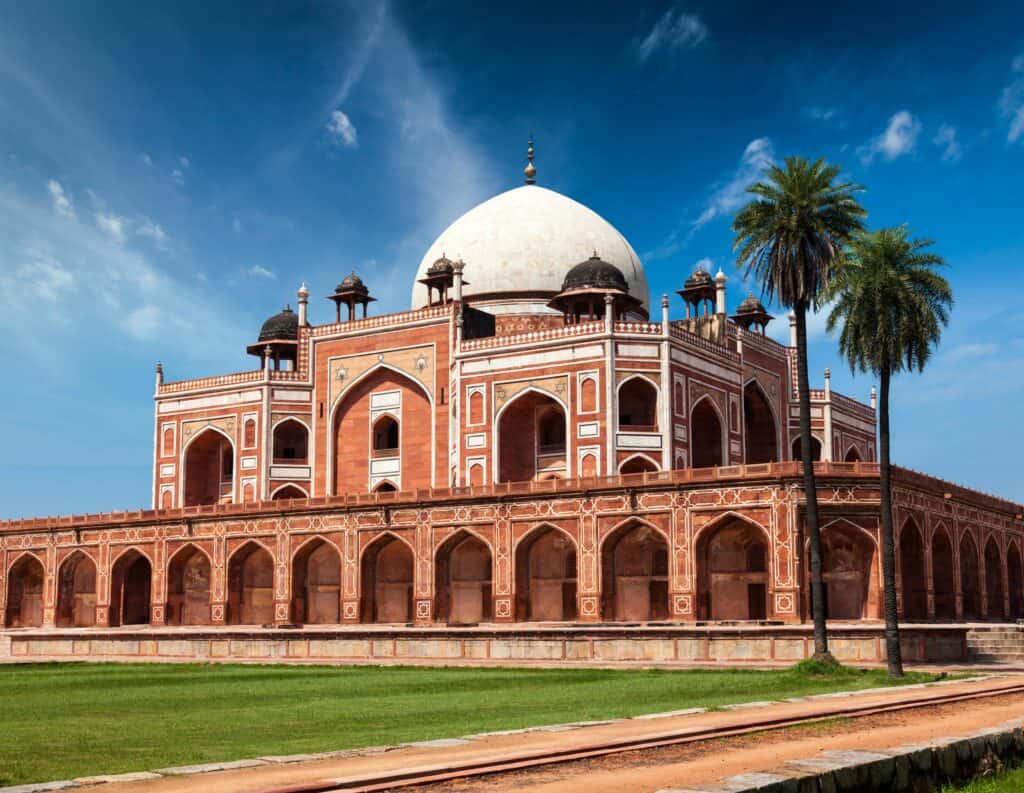
“Of particular cultural significance,” writes UNESCO about the Humayun’s Tomb, which has been designated a World Heritage Site. The tomb is dedicated to Nasiruddin Muhammad Humayun. He ruled the Great Mughal Empire of India for over ten years. Between 1562 and 1564, the construction of the tomb began. It is located in the center of the geometrically designed garden complex.
The building looks magnificent and is characterized by its dome as well as the seven-meter-high platform on which it is located. Inside is a minimalist, yet fascinating room, which contains the mock tomb of the Mongol. The garden in front of the tomb is also worth seeing. It has been designed symmetrically, which makes the whole place stand out.
Gandhi Smriti Museum
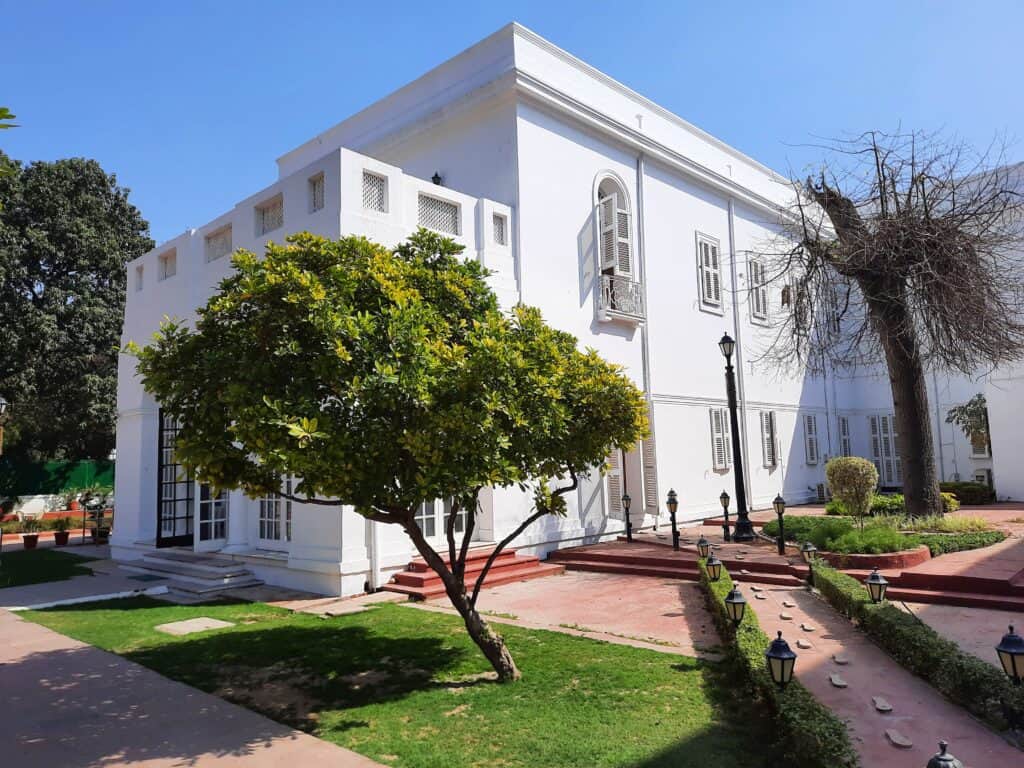
Gandhi lived in this house for the last 4.5 months of his life until his assassination on January 30, 1948. Gandhi’s life is impressively depicted here in a multimedia exhibition in addition to impressive items such as his spinning wheel, countless photographs, newspaper clippings, and film screenings.
There are similarities to the Mani Bhavan, the Gandhi Museum in Mumbai, but this museum is much larger and more extensive. Here you will learn everything you need to know about the “Father of the Nation.”
Swaminarayan-Akshardham-Temple-Sighting-Delhi-India
The Swaminarayan Akshardham is a unique center for Indian culture. You can think of it as a sort of Hindu Disneyland for Indians. At the center of the more than 40-acre complex is the magnificent Akshardham Temple, built of red sandstone and white marble. The ornate outer wall consists of over 200 sculptures. Inside you will find, among other things, a giant gilded statue.
.
Akshardham
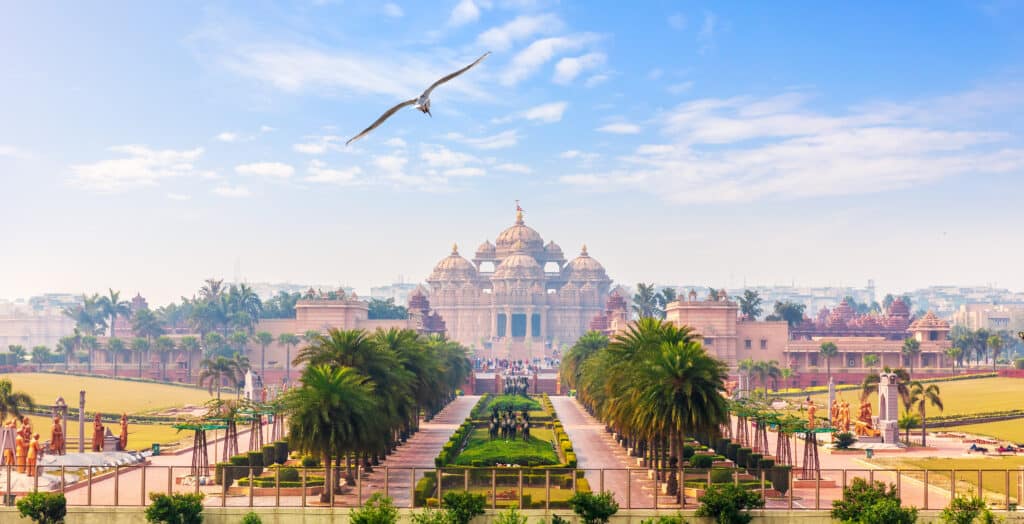
Be careful not to get lost here because this complex is simply gigantic. Akshardham is the largest Hindu temple site in the world. Be it the architecture, the gardens, or the pink sandstone; the temple is absolutely beautiful. But if you think now that this temple is ancient, you are wrong, as it is only 16 years old as it was completed in 2005.
You can also experience a lot here; there is also a cinema and some interesting cultural exhibitions. What you also have to see are the beautiful gardens, which are artistically designed.
The Akshardham Temple is located on the banks of the Yamuna River in east Delhi and is considered one of the holiest temples in India. Every part of this temple shows a sign of spirituality. There are more than two hundred murtis (so-called images, statues, or idols of a deity). The complex is enormous, and you can visit the different areas.
Lotus temple
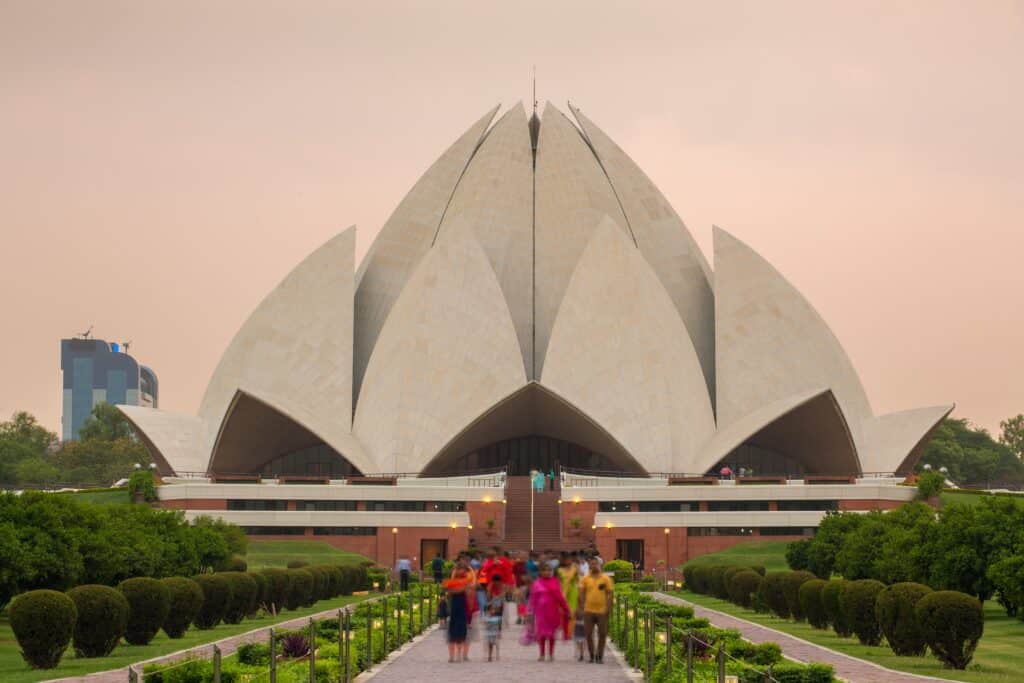
The Lotus Temple is characterized by a flower-like shape and is one of the most important sights in New Delhi. It is located in the middle of a lush green landscape. When you visit the temple, you will feel a pleasant and serene ambiance. This place is perfect for you if you are looking for meditation and peace.
What makes this temple so unique is that believers of all religions gather here for prayer. The holy scriptures of all world religions are recited here. The Lotus Temple is one of seven continental Baha’i temples; Bahaism is a religion that originated in Iran. All Baha’i temples have nine gates on all sides to symbolize religious openness.
In the well-kept gardens, as well as in the very simple temple itself, you will find peace from the hustle and bustle of the big city. It is especially worthwhile to visit in the evening shortly before closing time. Then the rush is not quite so great, and when the light changes, the temple really comes into its own.
Agrasen Ki Baoli Step Well
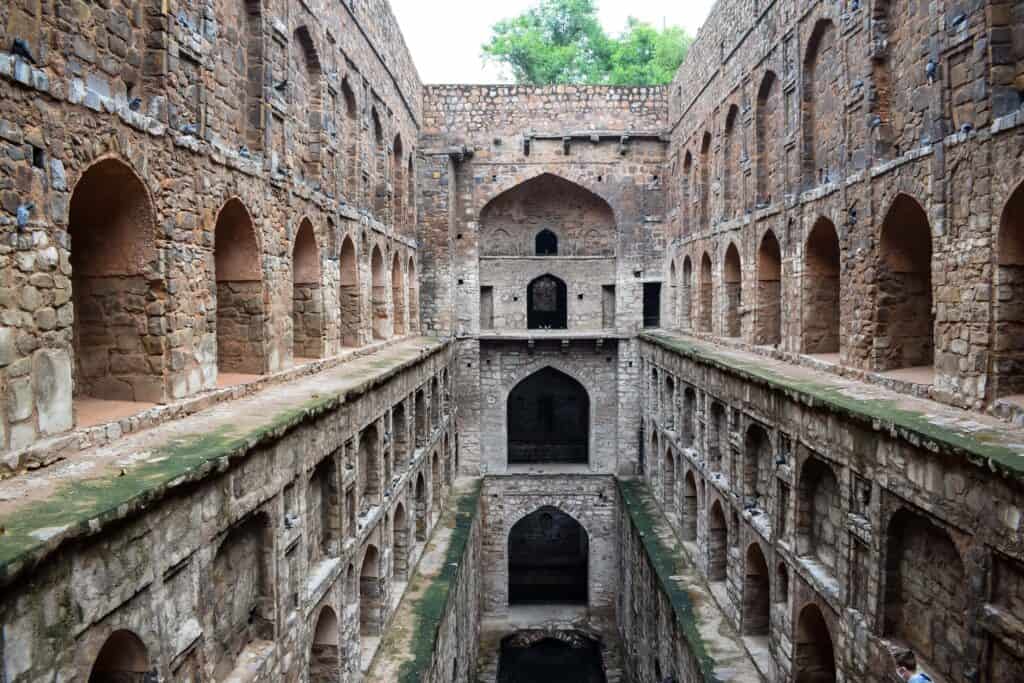
When you think of things to see in Delhi, a water supply building doesn’t usually come to mind. However, in the heart of modern New Delhi is a remarkable architectural wonder. For centuries, Agrasen Ki Baoli step well played a crucial role in supplying water to the metropolis.
The famous well was built to capture precious water in the arid climate of the North Indian plains. Step wells or “baoli” are widely used in India. These provided access to underground water supplies. People descended the steps of the baoli to reach the underground well and obtain water.
The Agrasen Ki Baoli has three floors, and in the walls, there are three levels of vaulted corridors decorated with niches. The 108 paved steps today lead to an empty water reservoir. Since the introduction of water installations, the baolis are no longer used in New Delhi. Today Agrasen Ki Baoli is popular with foreign and local visitors and is a protected monument that is undoubtedly a must-see.
Lodi Gardens
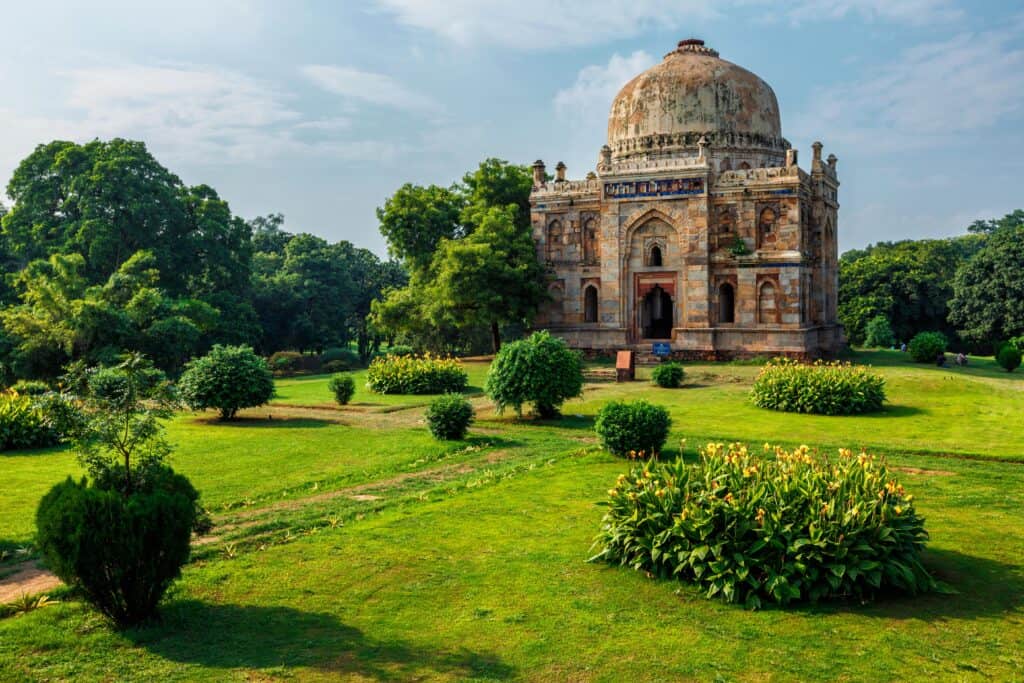
If you’ve seen enough temples, why not visit the 360,000 square meters of greenery in the Lodi Gardens. Okay, you caught us. You’ll find some historic buildings here, too. To name a few, the tomb of Mohammed Shah IV, that of Sikander Lodi, as well as another unknown one too.
Just a 30-minute walk from India Gate, you’ll find New Delhi’s most beautiful gardens, with 90 acres of lush grassland, exotic flowers, and enchanting ponds and rivers. Every now and then, you’ll walk past buildings and tombs dating back to the 15th century; this is a park you’ve never seen before.
Built in 1930, this beautiful park attracts visitors with monuments from the 15th and 16th centuries, manicured lawns, colorful flowers, shady trees, and ponds. Especially in the early morning and evening hours, the sprawling garden is a great place for a morning run or just as a relaxing retreat. Make sure to charge your camera; there is a lot to take photos of in this picturesque park.
Chandni Chowk/Moonlight Square Market
Delhi’s oldest and busiest market looks back on a long history. As early as the 17th century, goods were sold in Moonlight Square. The traditional bazaar became famous as the location of numerous Bollywood movies. Books, jewelry, fabrics, clothing, electronics; the market provides all kinds of consumer goods imaginable. The division of the area into different market areas and categories helps with orientation.
If you’re looking for something specific, you can look for the location on the Internet or on-site. Otherwise, just get involved in the Chandni Chowk adventure. But don’t forget to take a break at one of the food stalls; on our list of food recommendations: Paranthas, Kebabs, Rolls, Biriyanis, Chaats, Dahi Balle, Jalebis, Chole Bhature.
A visit to the mega-market is a lovely experience that you shouldn’t miss.
Dilli Haat Weekly Market
Vibrant colors in all variations, the smell of chapati in the air, and traditional handicrafts make the Dilli Haat weekly market an exciting destination. The street market opened in 1994, and the bazaar and food market has since developed into a popular spot for art and culture. The range of goods includes typical Indian saris, pottery, leather shoes, and jewelry.
A small entrance fee is charged for visiting the market. The price level of the Dilli Haat is somewhat higher compared to other markets. In return, the quality of many goods is usually better. Tip: negotiating skills pay off really well here.
Paharganj – Main Bazaar in Delhi
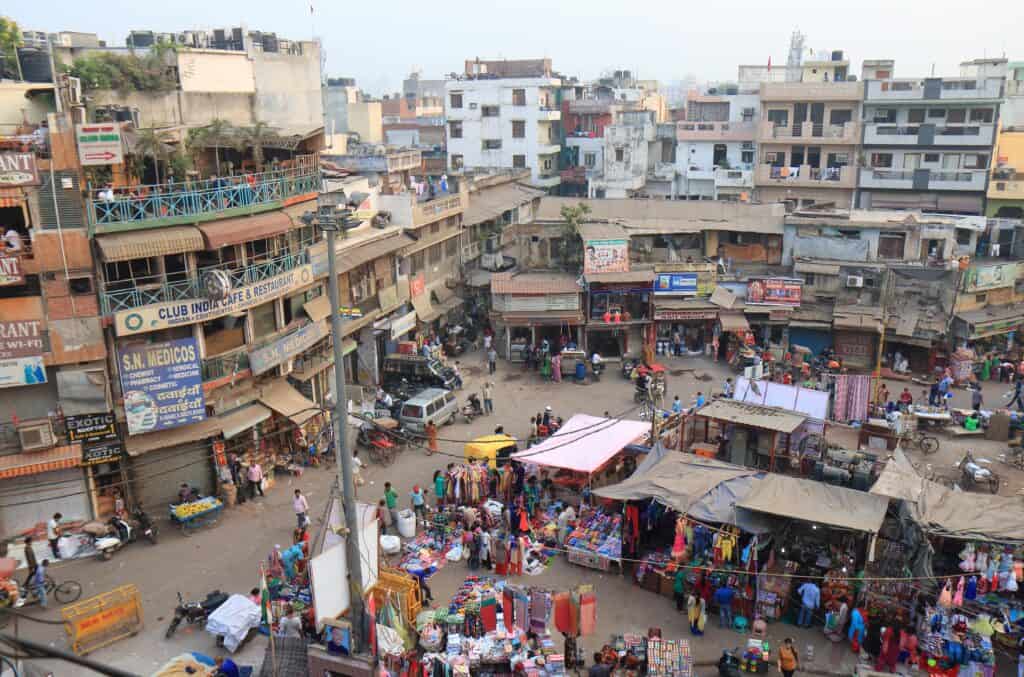
Paharganj was one of the first marketplaces outside the ramparts of Old Delhi. It is a lively, crowded and noisy marketplace. Paharganj is so lively, charming, and atmospheric that all types of travelers stay in its many basic and upscale hotels. The bazaar’s location near the New Delhi train station undoubtedly makes the Main Bazaar a hub for travelers and backpackers.
Paharganj is crowded and noisy but incredibly colorful. The place is filled with local women dressed in their brightly colored saris and men wearing their long pants and ordinary shirts. Stalls stand close to each other, and all kinds of things are offered here: Fruits, vegetables, household goods, clothes, henna, etc. A fine smell spreads from small mobile cookshops. The street is filled with honking cars, ringing rickshaws, shrill motorcycles, and rattling tuk-tuks. If you want to experience the unique Indian atmosphere, you can’t miss a visit to Paharganj.






